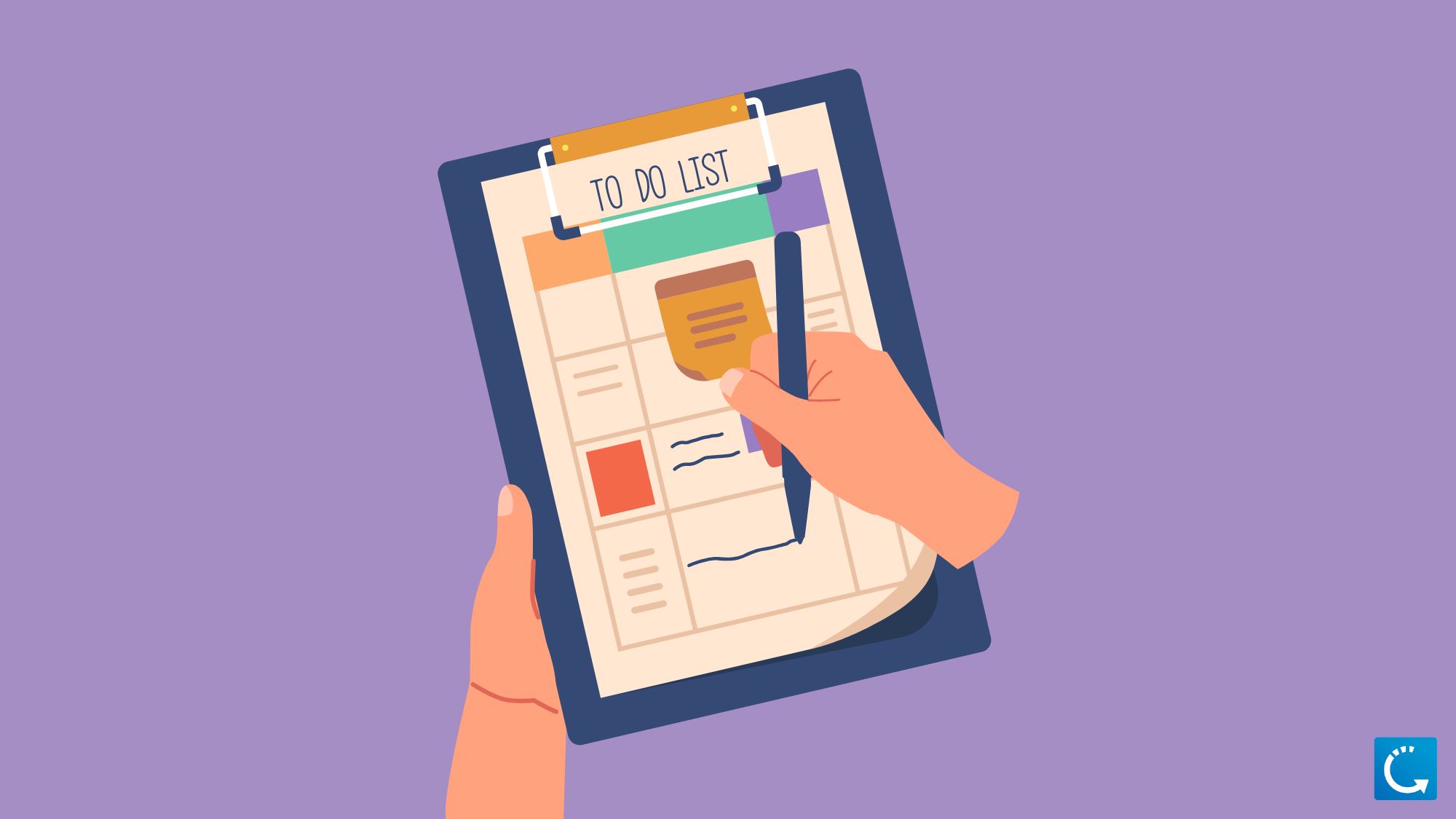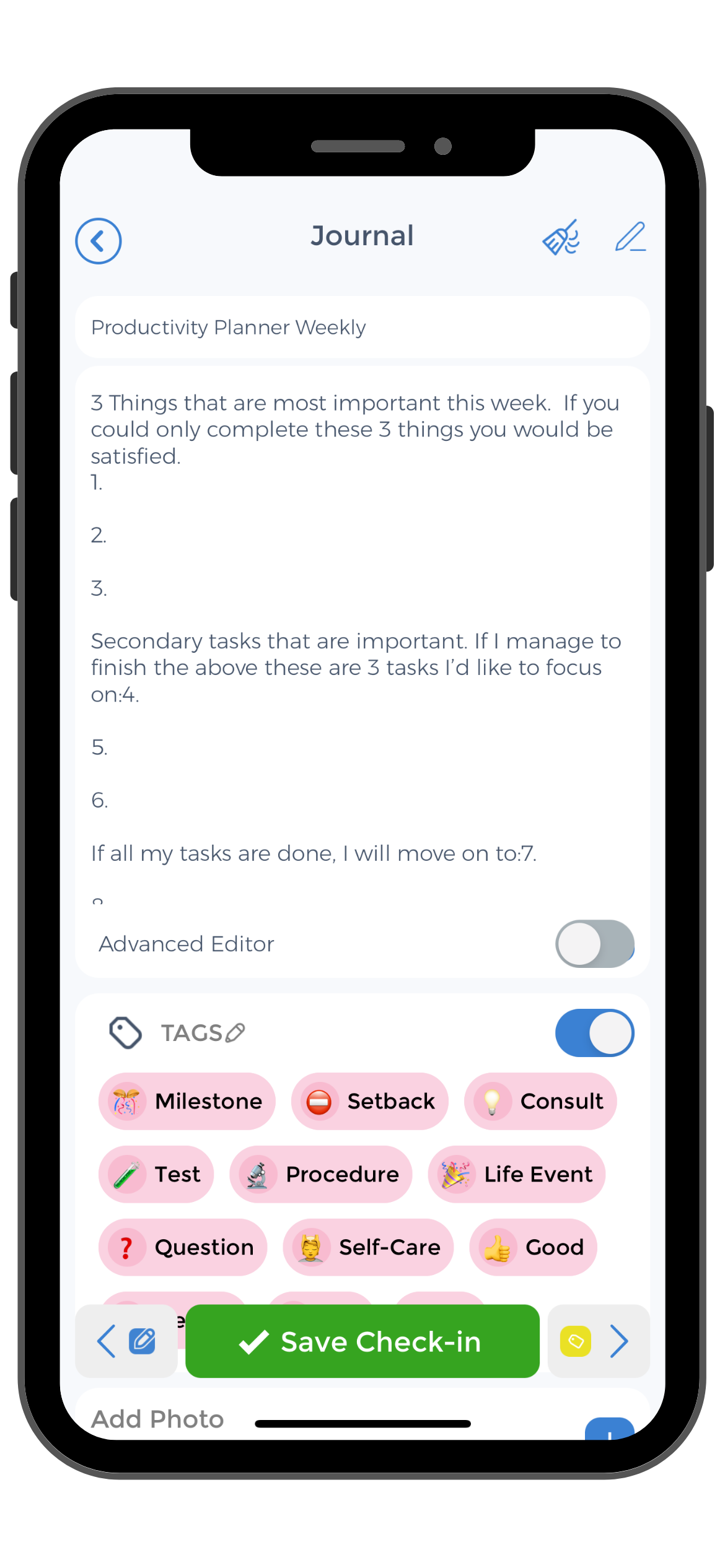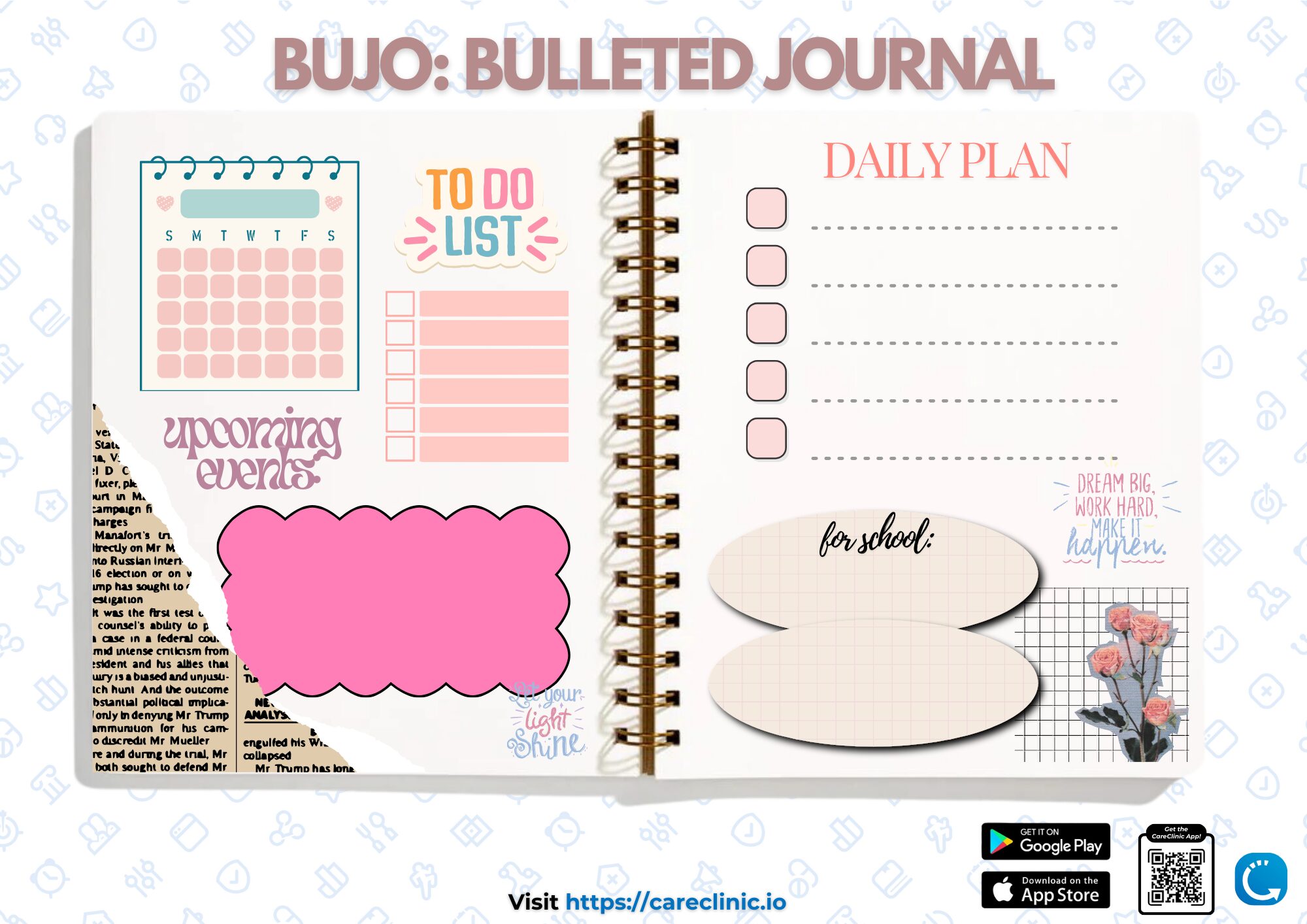 For patients with ADHD, organization and time management can be difficult skills to master. Many find that traditional planners and to-do lists simply don’t work for them. For patients with ADHD, the bullet journal can be an indispensable tool for staying organized and on track. The key is to find a system that works for you and to be as creative as you like in customizing it to your own needs.
For patients with ADHD, organization and time management can be difficult skills to master. Many find that traditional planners and to-do lists simply don’t work for them. For patients with ADHD, the bullet journal can be an indispensable tool for staying organized and on track. The key is to find a system that works for you and to be as creative as you like in customizing it to your own needs.
I recommend bullet journaling for my patients with ADHD for a few reasons. First, the system is highly flexible, so you can tailor it to your own specific needs. Second, it’s simple and straightforward, so it’s easy to use and maintain. And finally, bullet journaling is a great way to boost your executive functioning skills, which can help you in all areas of life. If you’re thinking about trying bullet journaling, I encourage you to try the CareClinic app. In this blog post, I’ll outline how to get started with your own bullet journal.
Table of Contents
- What is a Bullet Journal?
- How to Get Started with Bullet Journaling for ADHD
- Why does it help to reduce your cognitive burden?
- How the CareClinic App Does More Than a Physical Notebook
- Holding Yourself Accountable with Bujo for ADHD
- Why is it difficult to get started writing in bullet journals for ADHD:
- 5 Reasons why it is beneficial to use a bullet journal if you have ADHD
- FAQ’s
- I keep procrastinating when it comes to starting my bullet journal, what can I do?
- Clear Your Mind and Get Organized with our Daily Journaling App
What is a Bullet Journal?
A bullet journal (sometimes called a bujo) is a blank notebook that you can use to track anything and everything that’s going on in your life. There are no rules when it comes to using a bullet journal – you can customize it however you like!
There are Three Main Components of a Bullet Journal for ADHD
- The Index: This is where you’ll keep track of what’s on each page of your journal.
- The Future Log: This is where you’ll write down events that are coming up in the future so you can plan accordingly.
- The Monthly Log: This is where you’ll track events and tasks for each month.
In addition to these three main components, most people also like to include a daily log, where they track what they need to do each day. However, this isn’t necessary – some people find that daily logs are too overwhelming, so they prefer to stick with monthly logs only.
How to Get Started with Bullet Journaling for ADHD
- Find a notebook that you like. This step is entirely personal – use whatever type of notebook you feel most comfortable writing in! Some people prefer dotted notebooks while others prefer lined notebooks. You may also want to consider the size of the notebook – smaller notebooks are more portable but may be more difficult to write in if you have large handwriting. You may also consider using the CareClinic App with the built-in “Diary” feature instead of a physical notebook.
- Create your index. The index should be located at the beginning of your notebook and will serve as a table of contents for your journal. Simply create a list of page numbers and titles for each section of your journal (e.g., “Page 1: Index,” “Page 2: Future Log,” “Page 3: Monthly Log – January,” etc.). When using an app this is possible to do automatically by Filtering your logs for “Diary Entries” which will automatically render the titles of each entry automatically for you to sort through.
- Fill out your future log. Your future log should contain space for 6 months’ worth of events/tasks/appointments, etc. That way, you can refer back to it when necessary without having too much information on any one page. The benefit of using an app is you do not need to worry about this step.
- Fill out your monthly log. In your monthly log, track everything that’s happening in the current month. Include events, appointments, deadlines, and anything else that’s on your radar.
- Start using your journal! Refer back to your index whenever you need to find something specific in your journal, and refer back to your future log/monthly log when you’re planning or looking back at what happened in previous months.
A bujo can also be used for people with anxiety, depression, or other mental health issues. The key is to use it as a way to track your symptoms and triggers so that you can better understand your own patterns and find ways to cope. For example, if you journal every time you have an anxious thought or feeling, you may start to notice patterns in your thinking. This can be a useful way to identify and challenge negative thought patterns.
In addition, a bujo can help you keep track of things like your mood, energy levels and sleep patterns. This information can be extremely helpful when you’re working with a mental health professional to manage your symptoms.
Using a bujo can also be a great way to practice self-care. Dedicating some time each day or week to journaling can help you relax and de-stress. And, if you use your journal to track goals and positive affirmations, it can be a reminder of all the good things in your life.
Why does it help to reduce your cognitive burden?
The main reason bullet journaling is so helpful for people with ADHD is that it can help reduce your cognitive burden. When you have ADHD, your brain is constantly trying to process a lot of information at once, which can be overwhelming and lead to forgetfulness. By keeping track of everything in one place, you can lighten your load and give your brain a break.
In addition, bullet journaling can help you to become more organized and efficient in your everyday life. By taking the time to plan out your days, weeks, and months, you can save yourself a lot of time and energy in the long run. Additionally, by having all of your information in one place, you can reference it easily and make sure that you don’t forget anything important.
What happens when you have reduced your cognitive burden?
- You can look back at your journal and notice progress being made
- You will find it much easier to stick to your goals and plans
- Your overall stress levels will decrease
- You can reduce overthinking
You will have more energy for other things because you aren’t using all of your mental energy on trying to remember everything
How the CareClinic App Does More Than a Physical Notebook
The CareClinic app is much more than a physical notebook. It helps you manage and monitor your health, plus keep track of important appointments, medications and more. It’s easy to use. Simply download the app and create an account. You can then begin adding information about your health, including any medications you’re taking, your current health status and any appointments you have.
Some obvious advantages are:
- You can access your account from anywhere, at any time. The app can also be set to require a password when opened providing you additional privacy as you travel
- All of your information is stored securely in one place and backed up
- You can share your logs with medical professionals, family or friends – anyone who you think could help you better manages your health
- The app lets you set reminders for when to journal but also shows you streaks to keep you motivated and helps you build healthy habits
- The ability to search back and find a reference to any health problem
- The ability to also log other environmental or health factors and see them charted automatically to notice patterns
- CareClinic also helps you discover correlations automatically if you track mood, medications, or other factors that can then be shared with your healthcare provider
You can also use the app to set goals for your health and track your progress over time. This is a great way to motivate yourself to stay on track with your health goals. Plus, the CareClinic app makes it easy to share information with your doctor or other health care providers. This can help you get the best possible care and ensure everyone is on the same page about your health.
Holding Yourself Accountable with Bujo for ADHD
When you’re trying to make a change in your life, whether it’s quitting a bad habit or developing a good one, it can be tough to stay on track. That’s where the power of journaling comes in. Keeping a bullet journal, or bujo, can help you hold yourself accountable to your goals and make progress toward the person you want to be. You can use it as a basic habit tracker to track many different factors related to your health, especially with CareClinic.
What The Factors Tracker Does
If you are a student or adult, or really anyone with ADHD you may have trouble managing everything (“adulting”). You’d like to remember to clean, track your nutrition, exercise and ofcourse, get work done, and you’d like to make sure you have noted all this down and checked off what still needs to be done. CareClinic has a tool called “Factors” in the check-in screen that allows you to quickly tap and select environmental factors without the need to write them down. There are about 20 different categories with icons to choose from! See how they work below:
Tracking Water and Nutrition with Bujo for ADD
As you know, water and nutrition are two very important factors in maintaining a healthy lifestyle. They are also two factors that can be difficult to track. But with CareClinic you can use the dedicated Trackers for each to document them.
Tracking Medications, Vitamins and Supplements
If you take medication, vitamins or supplements, it’s important to keep track of them. This is especially true if you take multiple medications or have a condition that requires you to take medication at specific times. With the Medications Tracker in CareClinic, you can easily document all of the medications you’re taking, including the name, dosage, frequency and timing. This information can then be shared with your doctor or other health care providers.
Common medications that can be tracked for ADHD: Adderall, Concerta, Ritalin, Strattera, Vyvanse
Tracking Sleep and Exercise for ADHD
Those with ADHD often have difficulty sleeping and exercising regularly, which can lead to problems with focus and energy levels. Tracking sleep and exercise habits can help ensure that you are getting enough. There are a few different ways to track sleep and exercise for ADHD.\
Tracking Symptoms, Stool, and Other Health Metrics in Bujo
![]() CareClinic can help you manage symptoms associated with ADHD as well. Common symptoms are impulsivity, hyperactivity, and forgetfulness. You can use the Symptom Tracker to document these symptoms and track how they fluctuate over time.
CareClinic can help you manage symptoms associated with ADHD as well. Common symptoms are impulsivity, hyperactivity, and forgetfulness. You can use the Symptom Tracker to document these symptoms and track how they fluctuate over time.
The Stool Tracker is another useful tool for tracking health factors. This can be especially helpful if you have digestive issues or are trying to maintain a healthy weight.
While using a bullet journal as a healthy habit tracker is a great way to hold yourself accountable, it’s also important to share your health information with your doctor or other health care providers. This can help them understand what’s going on with your health and make sure that you are getting the best possible care.
Why is it difficult to get started writing in bullet journals for ADHD:
1. You don’t know where to start
There are so many different ways to set up a bullet journal that it can be difficult to decide where to start. Do you want to use an existing template or create your own? What colors do you want to use? What kind of information do you want to track? Answering these questions can help you get started.
2. You’re worried about being perfect
Another reason why people have trouble getting started with bullet journaling is that they are worried about being perfect. They don’t want their journal to look like a mess, so they don’t start writing anything down. But the truth is that your bullet journal doesn’t have to be perfect. It’s okay if it’s messy or if you make mistakes. You can always fix them later.
3. You don’t have enough time
Another reason why people don’t start bullet journaling is that they feel like they don’t have enough time. But the truth is that you don’t need a lot of time to get started. You can start with just a few minutes each day.
4. You don’t know what to write
If you’re not sure what to write in your bullet journal, start by brainstorming a list of topics that you want to track. This could include things like your daily schedule, your to-do list, your goals, or your thoughts and emotions. Once you have a list of topics, you can start adding entries to your journal. CareClinic comes with a built-in library of prompts to help you focus on getting started immediately.
5. You’re not sure how to decorate
One of the best things about bullet journaling is that you can decorate your pages however you want. But if you’re not sure how to decorate, start with some simple doodles or use washi tape to add some color. You can also look online for inspiration. There are lots of bullet journaling blogs and Instagram accounts that you can follow.
Getting started with bullet journaling doesn’t have to be difficult. Just start with a few basic pages and then add more as you go. Soon you’ll be tracking all kinds of information in your journal.
5 Reasons why it is beneficial to use a bullet journal if you have ADHD
1. Journaling can help you process information and save time
If you have ADHD, you may find it difficult to process information. Writing can help you organize your thoughts and make sense of the information that you’re trying to process.
2. Journaling can help you remember things
Another benefit of writing is that it can help you remember things. If you have trouble remembering things, writing them down can help you keep track of them.
 3. Journaling can help you stay focused
3. Journaling can help you stay focused
Writing can also help you stay focused. If you have trouble staying on task, writing can help you by keeping your mind focused on the task at hand.
4. Writing can help you reduce stress and improve mental health
Writing can help serve as a method of reducing stress by giving you an outlet to express your feelings.
5. Journaling can help you stay organized and be more productive
If you have trouble staying organized, writing can help you by keeping track of your thoughts and ideas. You can also use writing to plan and organize your day-to-day tasks.
FAQ’s
What is time blindness?
Time blindness is a condition that affects a person’s ability to perceive time accurately. People with time blindness may have difficulty telling the difference between two similar events, or they may have trouble estimating how long an event will last. Time blindness can be a symptom of ADHD, anxiety, and other conditions. CareClinic helps manage it by allowing patients to log their day, and set appointments and timers to help them stay on track.
What is hyperfocus?
Hyperfocus is a common symptom of ADHD. It occurs when a person becomes so focused on an activity that they become oblivious to everything else around them. Hyperfocus can be both a positive and a negative symptom. It can be positive because it allows a person to become completely engrossed in an activity and achieve a high level of focus. However, it can also be negative because it can make it difficult for a person to switch tasks or stop an activity when necessary.
What did the Happiness Project say about journaling?
The Happiness Project is a book by Gretchen Rubin that follows her year-long journey to happiness. In the book, she talks about the importance of journaling and how it can help you reflect on your life and make positive changes. Rubin recommends writing in a journal for 15 minutes each day or for five minutes three times a day. She also suggests using a prompt to help you get started, such as listing three things you’re grateful for. Journaling can be a great way to track your progress on your happiness project and make sure you’re staying on track.
Can CareClinic help create routines?
Yes, with Care Plans and reminders you can create routines and reminders for any task from cleaning, to taking your medications along with drinking water. You can check “check off” tasks from your Today list as you go on about your day. Once you are journaling and your day is structured, you can start to rely on your routine to free up time and headspace to focus on the things you want to do.
Do I need to record my gratitude in the journal?
Gratitude can be a great way to focus on the positive things in your life and increase your happiness. If you decide to journal about gratitude, you can try listing three things you’re grateful for each day or writing about a specific moment that made you feel grateful. You can also try using gratitude journal prompts to help you get started. However, you don’t need to focus on gratitude in your journal if it doesn’t feel right for you. You can journal about whatever you like, and there are no rules.
Is it easy to search and export logs from the CareClinic Diary?
Yes, the CareClinic Diary allows you to search and export your logs so you can keep track of your progress over time and print them for safekeeping or sharing as needed. The export and search functionality is directly in the Logs screen. You can also filter entries based on dates, care plans and even trackers.
Does CareClinic come with journaling templates like the 5-Minute Journal?
Yes, CareClinic comes with prompts that include the 5-minute journal, various productivity planners, and daily checklists. If you are feeling stuck, these prompts can help you get started with your journaling. You can also create your custom prompt and save it to reuse at a later time.
I keep procrastinating when it comes to starting my bullet journal, what can I do?
 It’s normal to feel overwhelmed when starting something new, especially if it seems like a lot of work. The best way to start is by taking it one step at a time. Begin with a few basic pages, like a to-do list or calendar. You can also just try writing a few sentences each day about what you did. As you get more comfortable, you can add more pages and features to your journal.
It’s normal to feel overwhelmed when starting something new, especially if it seems like a lot of work. The best way to start is by taking it one step at a time. Begin with a few basic pages, like a to-do list or calendar. You can also just try writing a few sentences each day about what you did. As you get more comfortable, you can add more pages and features to your journal.
Another thing you can try is to set a reminder to journal and write about whatever task you are currently doing and that’s it! Another thing you can try is using prompts to get started quickly.
Lastly, you can also try just inputting data in a different structure, so instead of sentences use short lists, or direct sentences, multiple paragraphs, or separate things into different pages or sections, whatever works for you. Soon, you’ll be tracking all kinds of information in your journal!
How often should I reflect in my bullet journal for ADHD?
We recommend journaling at least once a day. This can help you track your progress and see how your symptoms are affecting your daily life. You may also want to journal more frequently if you feel like your symptoms are changing or if you have a lot going on in your life. A good time to journal could be at night before going to sleep, to reflect on your entire day.
What kind of questions should you ask yourself in an ADHD journal?
Some questions you may want to ask yourself in your journal are:
- What were my main goals for today?
- What did I accomplish today?
- What tasks am I procrastinating on?
- What distractions did I face today and how did I deal with them?
- How well did I manage my time today?
- What am I feeling?
Clear Your Mind and Get Organized with our Daily Journaling App
Give Bullet Journaling a Try! If you’re struggling with organization and time management due to ADHD, I recommend giving bullet journaling a try.
Bullet journaling is a great way to manage ADHD symptoms and can help with organization and time management. It can be helpful to journal every day and track your progress over time.
If you’re feeling overwhelmed, you can also just try writing a few sentences each day about what you did. As you get more comfortable, you can add more entries and move on from there. Remember to be patient with yourself and take things one step at a time! To begin, download the CareClinic app for iOS (iPhone) or Google Android by tapping here.
Some people like to combine different tracking methods to get a complete picture of their health. The whoop journal is another way to track your daily patterns and see how different factors affect how you feel. You can use multiple tools together to find what works best for your specific needs.



